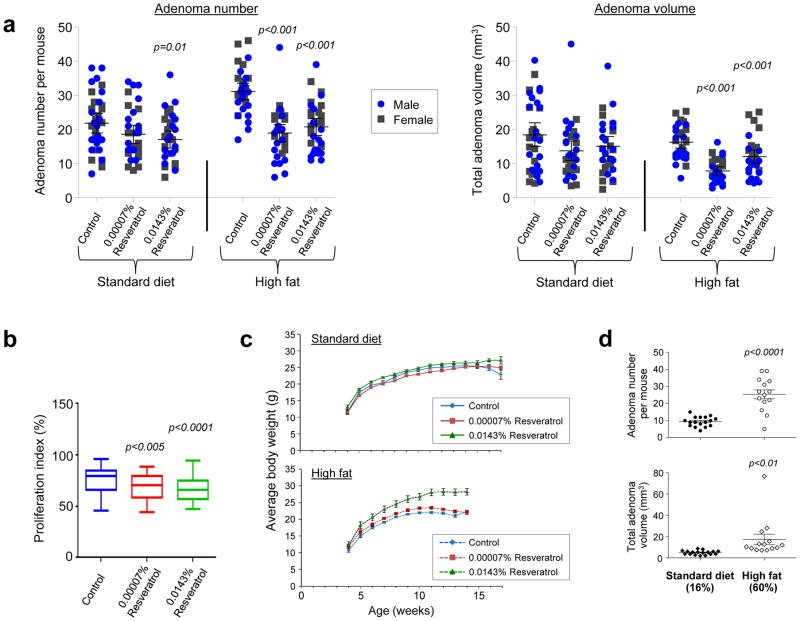Figure 2. Low dose resveratrol inhibits adenoma development in ApcMin mice on HFD more potently than a dose 200-fold higher.
Male and female mice were maintained on SD or HFD from weaning (4 weeks of age) supplemented with resveratrol (0.00007 or 0.0143%). Unless stated otherwise, mice on the SD (16% of calories from fat) were culled at 17 weeks whilst those on the HFD (60% of calories from fat) had to be killed at 14 weeks due to the tumour promoting effects of the latter. (a) Comparison of the number of adenomas per mouse and total adenoma volume in the small intestine of each animal. Data represent the mean ± SEM of 14–16 female plus 17–19 male mice per group. Significant treatment-related differences relative to the corresponding control diet group are shown. (b) Box plot showing the effect of resveratrol on the proliferative index in intestinal adenomas of ApcMin mice on HFD, as measured by immunohistochemical staining for nuclear Ki-67. Data represent the median percentage (plus 25th and 75th percentile) of Ki-67 positive cells per field, where 6 different visual fields were scored for each mouse (n = 6 males and 5 females per group). Whiskers indicate the maximum and minimum values. (c) Body weight of male ApcMin mice on SD or HFD alone or containing resveratrol. Data represent the mean ± SEM of 15–19 mice per group. High dose resveratrol significantly increased the body weight of mice on SD (p<0.05) and HFD (p<0.001) compared to corresponding controls; low dose resveratrol increased the body weight of animals on HFD only (p=0.05). (d) Effect of a control HFD on intestinal adenoma number and total volume compared to ApcMin mice on a SD. Animals in both groups (7–9 females plus 7–8 males) were culled at 14 weeks of age and data illustrate the mean ± SEM.

